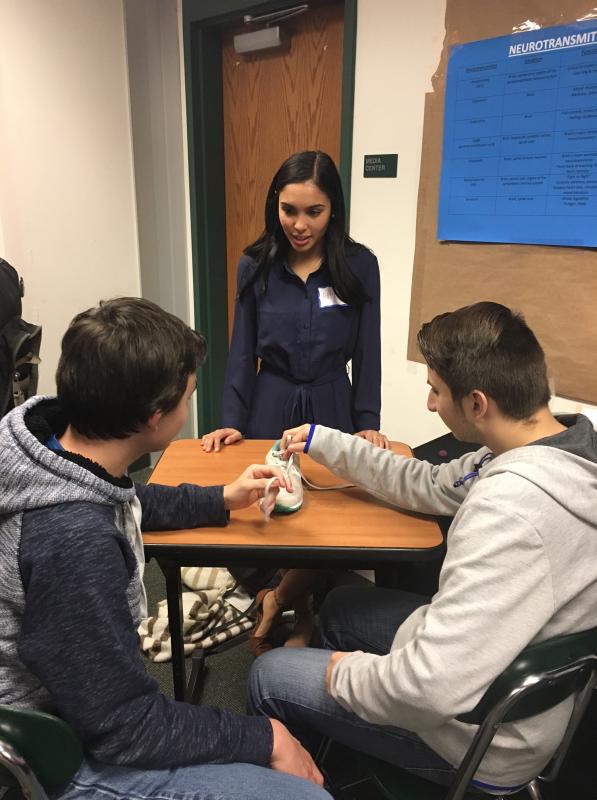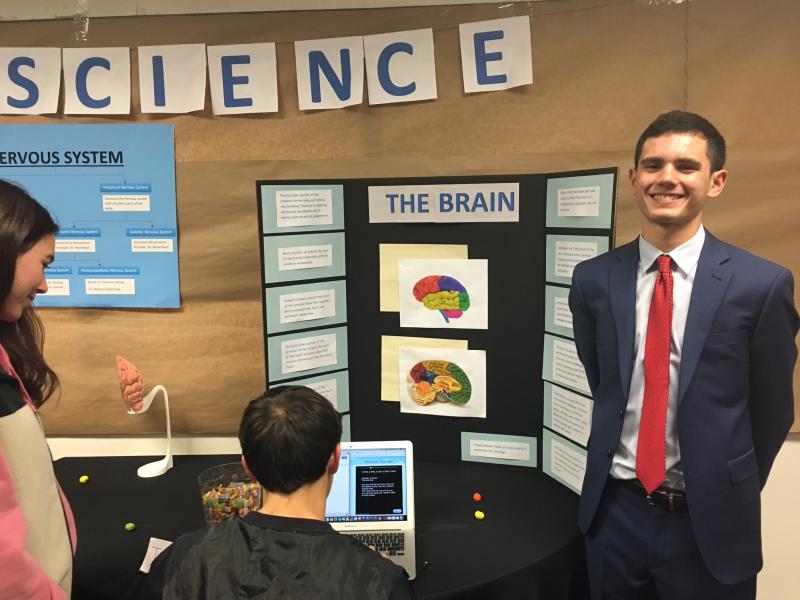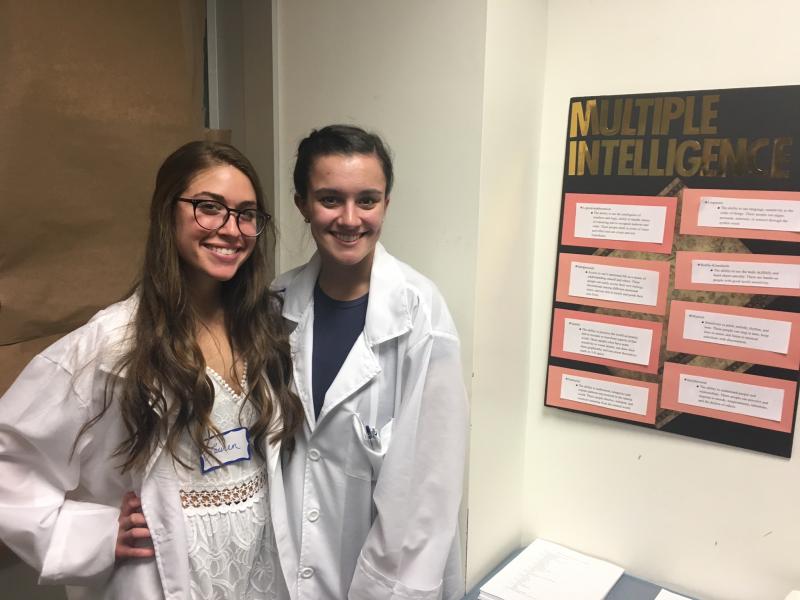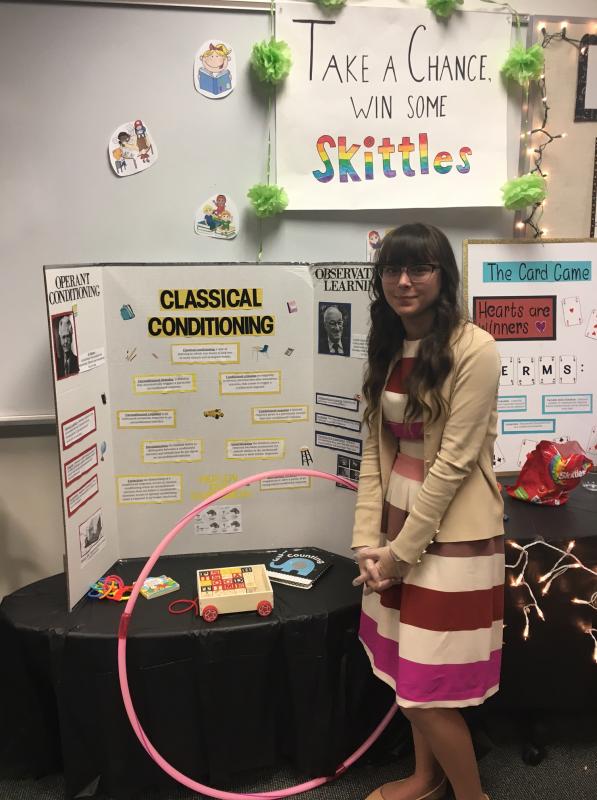Dartmouth High psychology students put peers to the test
How fast do neurons fire from the motor cortex? What hemisphere of your brain are you using right now? Which of the eight multiple intelligences best describes you? Side note: What on earth are multiple intelligences?
These were just a smattering of the psychological questions recently investigated by Dartmouth High School Advanced Placement psychology students in the 10th Annual Psychology Fair, led by teacher Lynn Vicente.
Vicente tasked her mix of junior and senior students with exploring psychology concepts, including neuroscience; learning and memory; thinking, language and intelligence; sensation and perception; and states of consciousness and social psychology. Each psychology student then created a display and demonstration for their peers to try out.
Vicente explained the idea driving the Psychology Fair is that it is a fun opportunity for “the students to do the teaching.” So, what was on the psychology lesson plan for the day?
Senior David Bacdayan wanted to dive into how fast neurons fire out of the motor cortex, which determines reaction times. So he devised a demo requiring students to tap a finger on a computer screen every time a red circle changed to a yellow circle.
Sound easy? Well, I put my neurons to the test and my reaction time clocked in at .399 of a second.
Bacdayan commented “not bad.” The fastest time so far? .248 of a second. Bacdayan smiled and said “Basketball player.” Should bode well for this season, Dartmouth Indians!
Senior Ariana Padilla’s demonstration involved two students working together to tie the laces of a sneaker to demonstrate brain hemispheres. However, each student was only allowed to do so with their outside hand, essentially cutting off half of their brain in a phenomenon known as “split brain,” when the left and right hemispheres are effectively split and work independently of each other instead of together, to ineffective and often frustrating results.
And how well do you know yourself? Surprisingly, not as well as you think. That’s the word from Senior Felisha Moniz, who put Dr. Howard Gardner’s theory of multiple intelligences to the test.
Dr. Gardner discovered we each naturally think in different so-called intelligences, meaning some of us identify as “visual learners” or “numbers people.”
Well, there are actually eight forms of multiple intelligence: linguistic, logical-mathematical, spatial, bodily-kinesthetic, musical, interpersonal, intrapersonal, and naturalist – and Moniz asked students to guess which form described them.
Students also completed a quiz asking questions like “Do you prefer hiking, reading, or going to the zoo?” Or “Would you best learn Shakespeare through independent study, group work, or a hands-on workshop?” Moniz explains those questions tap into what form of intelligence we actually possess.
So while you may think you’re a “numbers guy” – you could be “people smart” person. And knowing what type of intelligence you have can improve the way you learn and help you discover your talents.


















